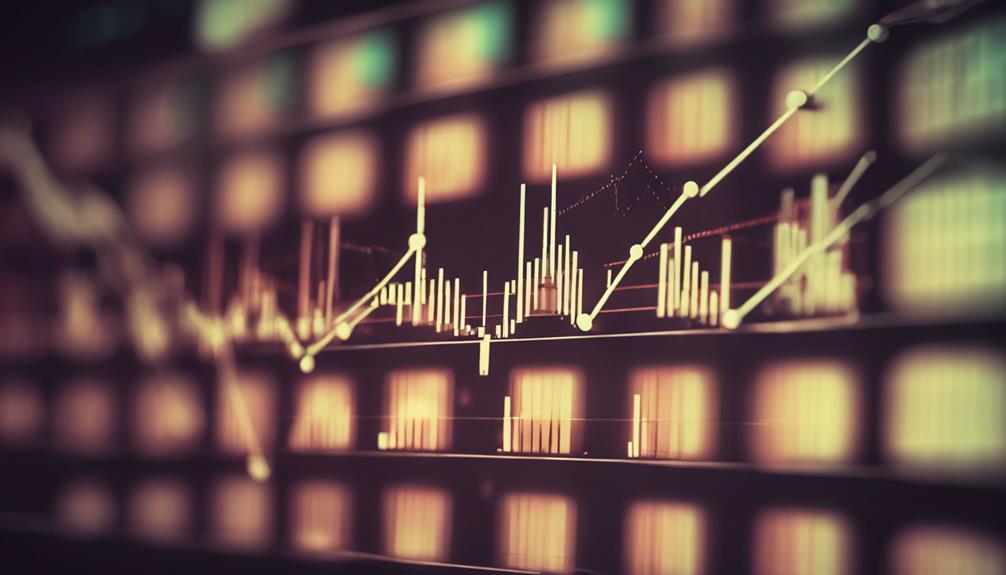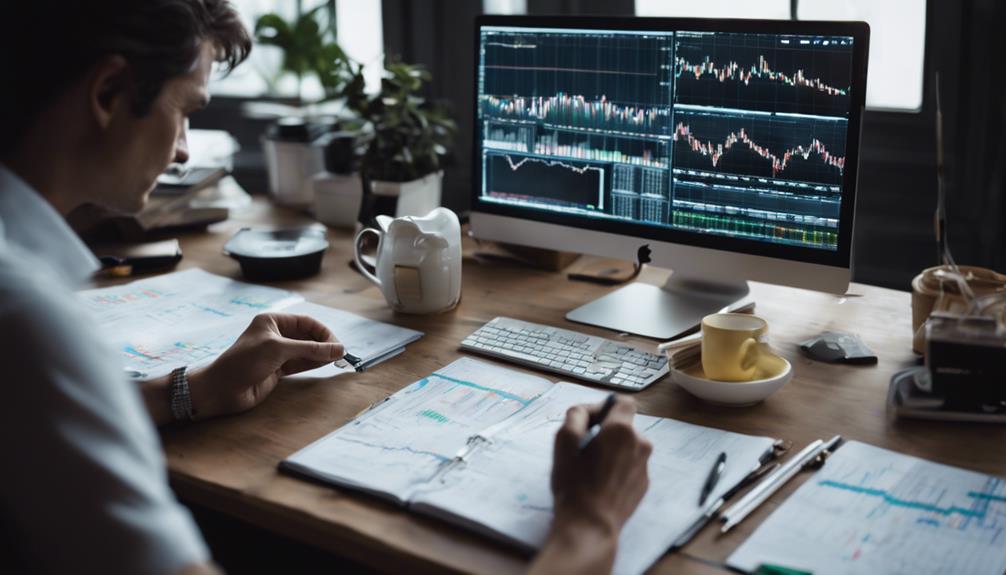In the world of forex trading, understanding how the market moves is like sailing on a big ocean. Just like a skilled sailor uses the stars to steer their ship safely, traders, whether they're newbies or experts, need to plan their journey carefully.
Being able to handle market ups and downs and take advantage of opportunities is key. So, how can you become a master of this ever-changing world? Well, it all comes down to a mix of skill, strategy, and a bit of gut feeling.
Risk Management Strategies

When you trade Forex, it's important to use strategies to protect your money and reduce potential losses. Two key strategies are position sizing and stop loss orders.
Position sizing means deciding how much currency to trade based on your account size and how much risk you're comfortable with. By figuring out the right position size, you can control the risk on each trade and make sure one bad trade doesn't hurt your overall account.
Stop loss orders are tools that automatically close a trade if the market moves against you past a certain point. Setting stop loss orders at specific levels can help you keep your profits and avoid big losses in volatile markets.
Fundamental Analysis Techniques
Fundamental analysis techniques in forex trading involve looking closely at economic indicators and how news affects different currency pairs.
By understanding how economic data influences the market, traders can make smarter decisions.
Analyzing these fundamental factors helps traders navigate the complexities of the forex market more effectively.
Economic Indicators Overview
Economic indicators are important when trading in the forex market. They give us clues about how well a country's economy is doing, which helps us predict how its currency might move.
Here are some key indicators and what they can tell us:
- GDP Growth Rate: This tells us how much a country is producing. If there's strong growth, the currency might get stronger.
- Inflation Rate: This shows us if prices are stable. High inflation can make a currency weaker.
- Unemployment Rate: This reflects how many people are out of work. High unemployment can make a currency less valuable.
- Interest Rates: These affect how much it costs to borrow money. Rising rates can make a currency more attractive to investors.
Knowing about these indicators can help us understand market trends and make better trading decisions.
Impact of News
News can have a big impact on the forex market. When important news comes out, the market can become very unpredictable, and prices can change quickly. To trade successfully, it's important to pay attention to the following things:
- Timing: News can come out at any time and cause sudden changes in how people feel about the market.
- Relevance: Not all news affects currency values the same way. It's best to focus on big economic events.
- Interpretation: It's important to understand how the news compares to what people were expecting. This can help predict how prices will move.
Chart Patterns for Trading

Chart patterns in trading are like pictures that show how prices have moved in the past. Traders use these patterns to help them decide when to buy or sell. For example, candlestick shapes like dojis or engulfing patterns can give clues about whether prices might go up or down.
Another important thing in trading is understanding trends. Traders look for patterns like head and shoulders, flags, or triangles to guess where prices might go next. They also use Fibonacci levels to find points where prices might stop going up or down.
Choosing the Right Broker
When you want to trade in the forex market, it's important to pick the right broker that fits your needs. Here are some things to think about when choosing a broker:
- Regulation: Look for brokers that are regulated by trusted authorities like the FCA, ASIC, or CySEC. Regulation helps keep your money safe and ensures fair trading.
- Leverage: Check the leverage options offered by brokers. Leverage can increase your profits, but it also raises the risks. Make sure the broker offers leverage that matches your risk tolerance and trading strategy.
- Trading Costs: Think about the overall cost of trading, including spreads, commissions, and overnight fees. Choosing a broker with low trading costs can make a big difference in how much money you make, so look for competitive fees that work for your style of trading.
Developing a Trading Plan

Creating a good trading plan is super important for doing well in forex trading. It's like a map that guides you and keeps you on track. A solid trading plan usually includes things like looking at past market data (like prices and trading volume) to predict future price movements – this is called technical analysis. Traders use different tools and patterns to figure out when to enter and exit trades. It helps them make smart decisions based on how prices have behaved in the past.
Another key part of a trading plan is position sizing. This means deciding how much money to risk on each trade based on things like how much money you have, how much risk you can handle, and how likely the trade is to succeed. Position sizing is important because it helps you manage risk and avoid big losses that could destroy your trading account. By using technical analysis and good position sizing in your trading plan, you can improve your chances of success in forex trading.
Emotions and Trading Psychology
When it comes to forex trading, it's not just about the numbers. Understanding your emotions and mindset is key to being successful in the unpredictable world of trading. Here are three important things to think about:
- Stay Positive: It's important to have a strong mindset to handle the highs and lows of trading. Keep a positive attitude, focus on your long-term goals, and be ready to adapt to changes in the market.
- Control Your Emotions: Emotions like fear, greed, and overconfidence can make you act impulsively. Stay calm, stick to your trading plan, and avoid getting carried away by the desire for quick profits.
- Bounce Back: It's crucial to learn from your losses and keep moving forward. Don't dwell on past mistakes, but instead focus on improving your trading strategies for the future.